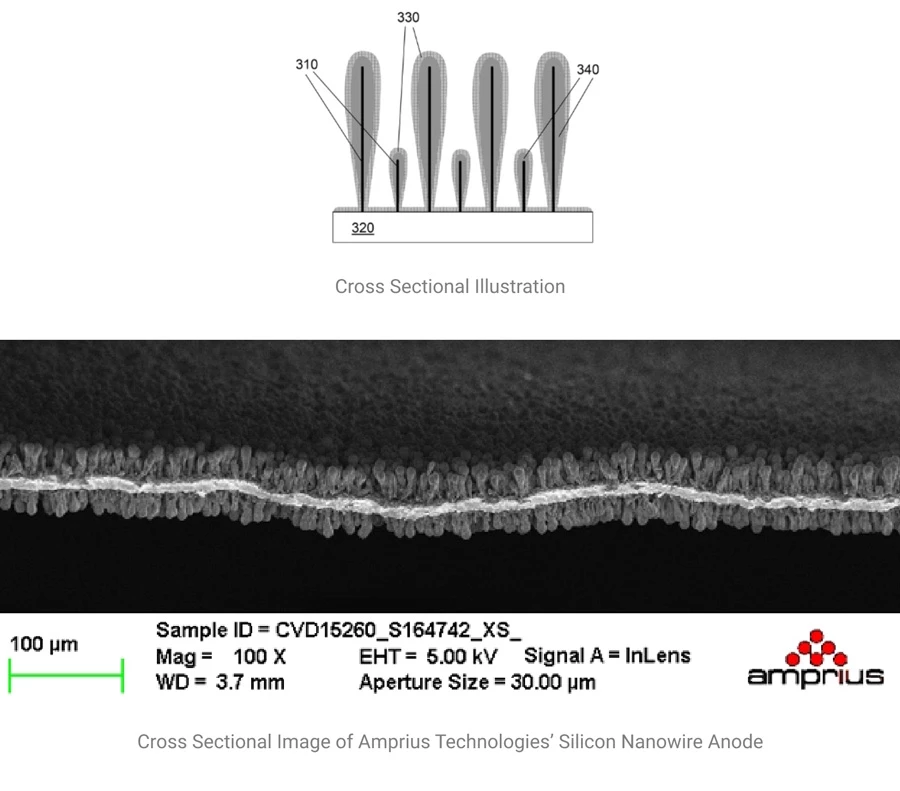Californian company Amprius has shipped the first batch of what it claims are the most energy-dense lithium batteries available today. These silicon anode cells hold 73 percent more energy than Tesla's Model 3 cells by weight, and they take up 37 percent less volume.
Tesla's current Model 3 cells serve as a state-of-the-art comparison, and hold around 260 Wh/kg and 730 Wh/l, according to Enpower. The new Amprius cells are a significant step up, both in specific energy and energy density, holding 450 Wh/kg and 1,150 Wh/l – and the company says that the undisclosed number of cells just delivered to "an industry leader of a new generation of High-Altitude Pseudo Satellites" give it bragging rights for "the highest energy density cells available in the battery industry today."
Amprius says the batteries' impressive performance is due to its silicon nanowire anode technology. When you charge up a lithium-ion battery, you're effectively pulling an electron off each lithium atom sitting happily at the cathode, and moving them across to the anode via external wiring, since electrons can't pass through the electrolyte or separator between the anode and cathode. Their negative charge pulls the positively-charged lithium ions across through the electrolyte and separator, where they each find an electron and become embedded in what's typically a graphite lattice at the anode.

Amprius has replaced that graphite lattice with silicon nanowires. Silicon can store some 10x more lithium than graphite, but it tends to swell and crack, drastically reducing cell life. Amprius says that when you form the silicon into porous nanowires, arranged as a kind of forest of longer wires with shorter ones in between, the silicon is able to tolerate swell and resist cracking, extending the life of the cell to the point where silicon anodes can become a competitive technology.
The company says the silicon nanowires are rooted right into the substrate of the anode, so conductivity (and thus power) is high. It says the cell cycle life is "excellent" and "continually improving," although it doesn't put any numbers on it, and it also says the anode is the only part of the battery that changes; the rest can be produced using existing manufacturing methods and components.
Obviously, the world is ready and waiting for next-gen battery cells that can store more energy in less size and weight – everything from smartphones to electric vehicles would benefit either from a weight or space reduction, and emerging technologies like electric VTOL aircraft are crying out for batteries that can improve their range and capabilities.

And of course, energy density and specific energy are just two metrics on which a battery needs to compete. Thermal performance, safety, charge/discharge rates and cycle life will all play a big part, as indeed will price. The fact that Amprius's first customer is in advanced aerospace and making satellites would suggest that at this point, these cells aren't going to compete on price.
The company will soon choose a site, on which it'll start building a mass production facility, which will bring economies of scale that might make this technology relevant in the EV market and elsewhere. By the time that factory's up and running, we should also be able to put some exact performance metrics on another advanced electrode manufacturer we've been reporting on: Nawa Technologies says it's developed a way to cheaply manufacture vertically aligned carbon nanotube electrodes, claiming these could lead to 300 percent improvements on today's lithium batteries. We shall see.
Source: Amprius





